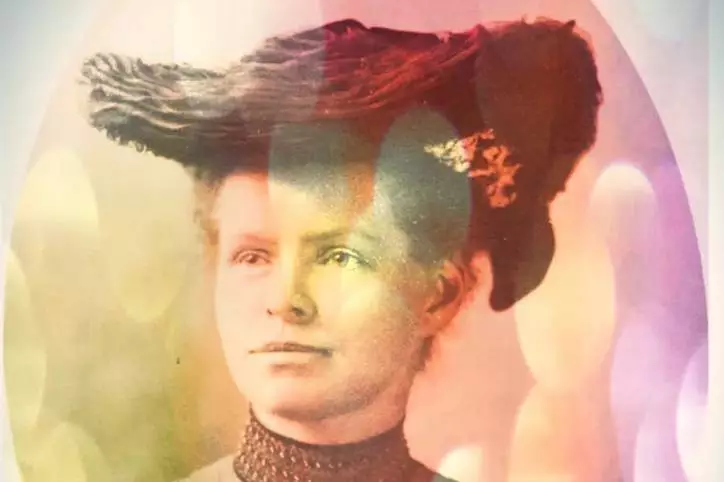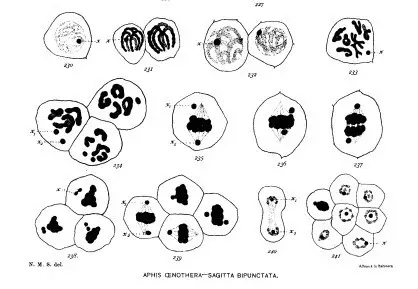
At the beginning of the 20th century, biologist Stevens solved a problem that has plagued the human race for thousands of years. This problem is very simple to say, but it is extremely difficult to understand: Why is there a distinction between men and women? She conducted pioneering research at Bryn Mawr and finally discovered the cause of the difference—sex chromosomes.
Mongol
Thanks to Stevens's work and follow-up studies based on it, we now know that gender is a genetic gain, and the father's sperm determines the sex of future generations. However, in the long history before mankind, this issue appeared very mysterious and gave birth to many interesting theories.
Aristotle believes that the child's gender is determined by his father's body temperature during sex. The textbook "Developmental Biology" wrote: "He urged older men to prepare for this if they want to have a son."
In the 19th century in Europe, it was widely believed that nutrition made up for gender, parents with poor nutrition gave birth to boys, and girls had good nutrition. In the past few centuries, many other strange theories have emerged.
In the eighteenth century French proologist Michel Procope-Couteau (author of The Art of Having Boys) believed that two testes/ovary correspond to two genders. He "suggested that the best way to control the sex of future generations is to remove one testicle or ovary that belongs to another sex; although there is a less intense approach - the woman is lying on the side (the side with the correct sex is down) and then by gravity. To achieve this goal.†This passage comes from the book The Evolution of Sex Determination by biologists Leo W. Beukeboom and Nicolas Perrin.
Now we know that the above theories are nonsense. This is thanks to Stevens's research.
Late bloomer
Stevens was born in Vermont, USA in 1861. She had enough money at the age of 35 to enter Stanford University, a newly-started university in California where she began to study science and grow, in 1890. Years with bachelor's and master's degrees. After graduating from Stanford, Stevens applied for a Ph.D. degree at Bulinmore College in Pennsylvania—a level of education that was very rare for women at the time.
At the beginning of the 20th century, chromosome carrying genetic information was still a new theory. The content of Mendel's work was just "rediscovered" by people in 1900 (no one listened to his theory when he was alive). The scientific community was also trying to answer how the various traits including gender could be passed between generations.
Stevens wants to find out exactly how (or whether or not) gender is genetically inherited. She observed the chromosomes of Tenebrio molitor using a microscope and discovered secrets that had escaped people's sight for thousands of years.
She found that there were 20 large chromosomes in female Tenebrio cells, and although males also had 20, one was significantly smaller than the other 19. Stevens wrote in the summary report: "This does seem to be the phenomenon of chromosomes determining gender."
She concludes that such differences can be traced back to the sperm of the mealworms. Indeed, she found that there are two versions of the chromosomes of Tenebrio spermatozoa: one chromosome is large or small. "Sperm (producing offspring) that contains a small chromosome is a male," she writes. "And the offspring that are similar in size to the 10 chromosomes are offspring that are female."
"This is the result of more than two thousand years of human thinking and experimental accumulation of animal plants and human gender formation," historian Stephen Brush explained in his "The History of Science Society." At the same time, it provides an important test for Mendelian gene theory that has recently been rediscovered. The latter has become the central theory of modern biology."

Steven's cell division. Source:Studies in Spermatogenesis
No glory
Stevens's colleague and former tutor, EB Wilson, is a legendary biologist who is often regarded as a sex chromosome discoverer.
The reason for this is simple: gender discrimination.
Wilson, like Stevens, was studying the issue and published similar results in the same period. However, in the species he studied, males lacked a chromosome more than females. This is less common in nature. Steven's XY chromosome model is the basis of human gender decision theory. In addition, Steven's model better supports Mendel's theory of gene - some genes play a leading role, and their corresponding alleles are obscured.
“People always say that EB Wilson and Stevens observed the same result at the same time,†Brush writes in the book, but “It is likely that Wilson did not come to the conclusion of Stevens before arriving at the conclusion of the gender decision.... Because Wilson has already achieved many achievements in other fields, he is always given the most honor. "
Wilson's article originates earlier than Stevens, and his academic reputation is also higher, so he has always been considered as the person who discovered the gender decision. However, although these two articles are similar, Stevens's conclusion is obviously more correct and the evidence is more abundant and powerful. Wilson still believes that environmental factors will influence gender decisions, and Stevens believes that this depends entirely on chromosomes. Both of these views could not be fully verified at the time, but time proved that Stevens was correct. (Annotation: At least for humans and other mammals sex is determined by the chromosome, but there are indeed some species of sex determined by the environment), they should be considered as common discoverer. Nonetheless, only Wilson received recognition and honor.
This is a typical case of the Matilda phenomenon. The term comes from the abolitionist Matilda Gage. It means that women’s achievements are often attributed to their male colleagues—they become co-authors, are overpaid, Even completely cover up their contribution. Stevens is by no means the only female scientist who has such an experience: For example, Rosalind Franklin of the 20th century, whose work played a decisive role in the discovery of DNA, was forgotten.
Stevens died of breast cancer in 1912. The New York Times published an obituary for this, summing up her achievements: “She is one of the few outstanding female scientists and a leader in contemporary biology.â€
This is really a conservative assessment.
Written by Brian Resnick
Translator Wang Ke
Zhang Shichao
Original link:
Https://
ZGAR AZ Vape Pods 5.0
ZGAR electronic cigarette uses high-tech R&D, food grade disposable pod device and high-quality raw material. All package designs are Original IP. Our designer team is from Hong Kong. We have very high requirements for product quality, flavors taste and packaging design. The E-liquid is imported, materials are food grade, and assembly plant is medical-grade dust-free workshops.
From production to packaging, the whole system of tracking, efficient and orderly process, achieving daily efficient output. WEIKA pays attention to the details of each process control. The first class dust-free production workshop has passed the GMP food and drug production standard certification, ensuring quality and safety. We choose the products with a traceability system, which can not only effectively track and trace all kinds of data, but also ensure good product quality.
We offer best price, high quality Pods, Pods Touch Screen, Empty Pod System, Pod Vape, Disposable Pod device, E-cigar, Vape Pods to all over the world.
Much Better Vaping Experience!


Pods, Vape Pods, Empty Pod System Vape,Disposable Pod Vape Systems
ZGAR INTERNATIONAL TRADING CO., LTD. , https://www.zgarvapor.com